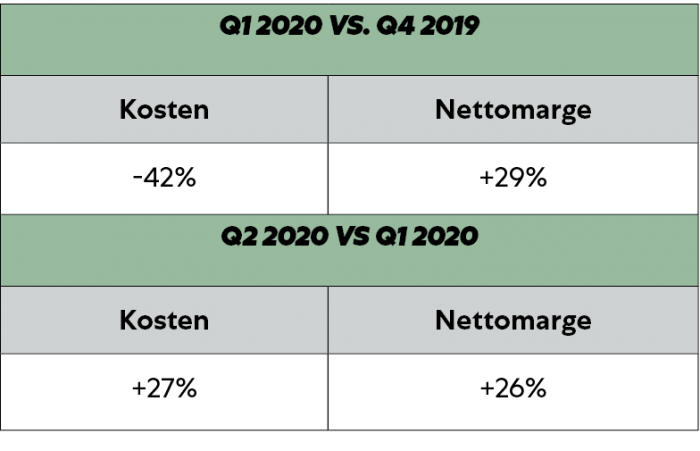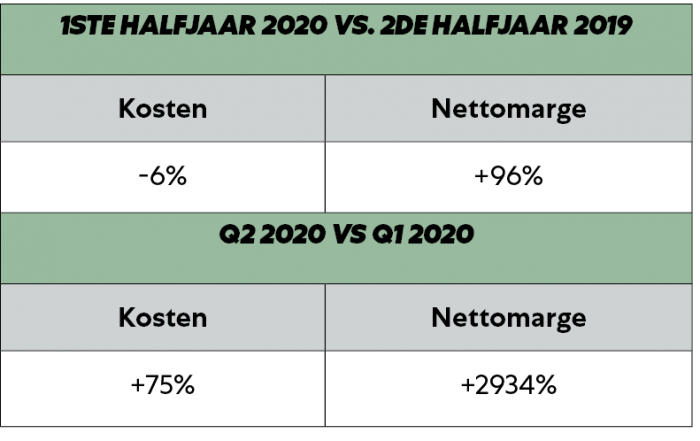The project consisted of 2 parts:
- Gain insight into the margin per order and the net margin per campaign
- Developing an algorithm based on the insights
Margins per order and net margins per campaign
An important starting point for managing the net margin is obtaining insight into the margins per order. A conversion in Google Ads, is an order. But one order can contain several products. Also, it is not always the case that someone who clicked on an advertisement for product A actually bought product A. This can also be other products.
We wanted to find out what the margin is of the products in the corresponding order. This makes it possible to calculate the gross margin per order. We can then link this to the associated advertisement so that we can calculate the actual net margin of that advertisement.
To gain insight into the margin per order, we have built a link with the ERP system of FixjeiPhone. With the help of this link, the orders of FixjeiPhone can be consulted and loaded into our software. This data is also supplemented with relevant information to calculate the margin per order. Think of the products in the order, purchase costs, shipping costs, returns, etc.
Furthermore, a link with the ERP system is not necessary to set this up. There are other possibilities for this, such as loading the required data via Google Analytics.
Next, we were able to link the collected order data to associated advertisements via data from Google Analytics. This allowed us to create an overview, which provides insight into the net margin per campaign, ad group, keyword or product. If desired, multiple aggregation levels are even possible.
Algorithm
To maximise the net margin, our data scientists created an algorithm based on the insights gained in step 1.
The insights herein provide input for the algorithm. This algorithm predicts with what bid the advertisement in question can achieve the highest possible net margin. We then implement this algorithm in FixjeiPhone’s shopping campaigns.
Revenue component
An element of the margin algorithm is the revenue component. The main objective is to maximise the net margin. However, we do not want this to be at the expense of the revenue. For this reason, the algorithm takes into account, through the revenue component, whether you can still achieve the defined revenue targets.
If the algorithm detects that this is not the case, it is time to take action, adjusting some bids so that the revenue increases, but the margin is affected as little as possible.
This element, therefore, ensures that the revenue is guaranteed and, at the same time, is managed based on maximum margin.
Insight and control
Because we place the data that has been made transparent in the software, it is also directly and clearly accessible to our customer, via their own user account in the software. Thanks to these additional insights, FixjeiPhone has more control over the Shopping campaigns. Also, with the help of these extensive insights, they can perform better analyses.






 ”Google shopping is an important sales channel for us, one where many companies only focus on a ROAS objective.
”Google shopping is an important sales channel for us, one where many companies only focus on a ROAS objective.